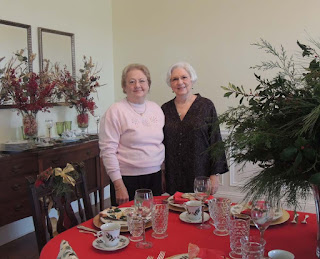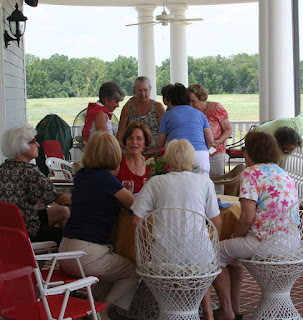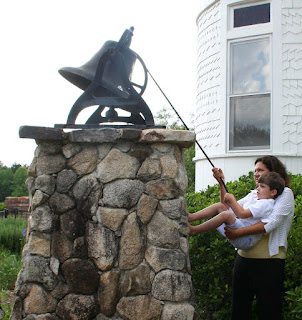The Merry Weather Garden Club met on Thursday, December 6th, 2012 at the home of Carla Snider for a Christmas Party. The Snider’s home had been used earlier in the Woodbury Tour of Homes and with the house beautifully decorated by Carla and her friends, she invited the garden club plus friends from the Woodbury, Imlac, and Gay communities to enjoy it.
Guests brought plates and trays of delicious goodies to enjoy. Salads, tea sandwiches, and cheeses made the party a luncheon plus there was a bevy of desserts. One special Christmas tradition is for the guests to sign Snider’s Christmas tablecloth. Signatures from guests at Carla’s first party in Woodbury were evident in one corner of the cloth.
Every available corner of the house was decorated by either Carla or her many helpful and talented friends. The exterior was swagged in greenery, berries, and bows. There was a decorated tree outside in the pool house, one in the turret of the back porch, and smaller trees located in almost every room. The entrance hall however was perfectly designed to showcase a large striking tree, and it was spectacular. The dining room was set with Christmas china and chair covers, table cloths, and decorations carrying out Carla’s Christmas colors.
Each room in the house had a fireplace, mantel, or table top decorated. The sheer immense amount of labor came from ladies who had been dropping by for months before the tour to plan and organize. Snider’s neighbor Phyllis Daniel made one upstairs room the “Angel Room.” She also used holiday Barbies, dressed in satin evening gowns, on the mantel along with greenery to give a unique party flair.
Snider decorated the library mantel with a variety of colorful Nutcrackers. Her living room mantel displayed “stockings hung by the chimney with care.”
A bevy of friends chipped in and wrapped the foyer stairway and decorated the large tree. Mary Beth Tsoukalas gathered many truck loads of greenery from her front and back yards here in Woodbury and in Marietta.
A consensus of votes chose the favorite Christmas room the third floor children’s area. All the twin beds boasted Dutch Doll quilts courtesy of Kitha Kierbow. Erma Jean Brown came up with the idea of making the third floor a storybook attic, and Snider and friends each took two dormers and decorated them. One of Carla’s dormers was devoted to Beatrix Potter and displayed bunnies, Potter’s books, and tea time play things. Snider also made one of the dormer nooks into a snowman vignette. Phyllis Daniel did a Mickey Mouse corner and also a nook filled with Dr. Seuss’ Grinch. Erma Jean Brown’s dormer was the perfect setting for a formal Victorian Tea Party. Winnie the Pooh and friends from the Hundred Acre Wood filled Brown’s second third floor play area. Mary Beth Tsoukalas showcased dozens of colorful Raggedy Anns and Andys in one area and the last children’s corner featured adorable farm animals and farming equipment.
The tables, sunroom and kitchen were a combination of all of the friends coming up with ideas. Erma Jean Brown decorated Sam Snider’s forest animal tree in his room, Carla Snider did the Christmas moose and deer in the study. All chipped in to decorate the craft room together. Snider and Tsoukalas even had a Santa Claus closet!
The size and number of rooms in the house made it a gigantic challenge, but Snider and friends rose to that challenge. Carla said she was so very grateful to her friends, but that they made a good team and had lots of fun too!
Garden club members signed up for months in 2013 in which they would host or present a program.








































